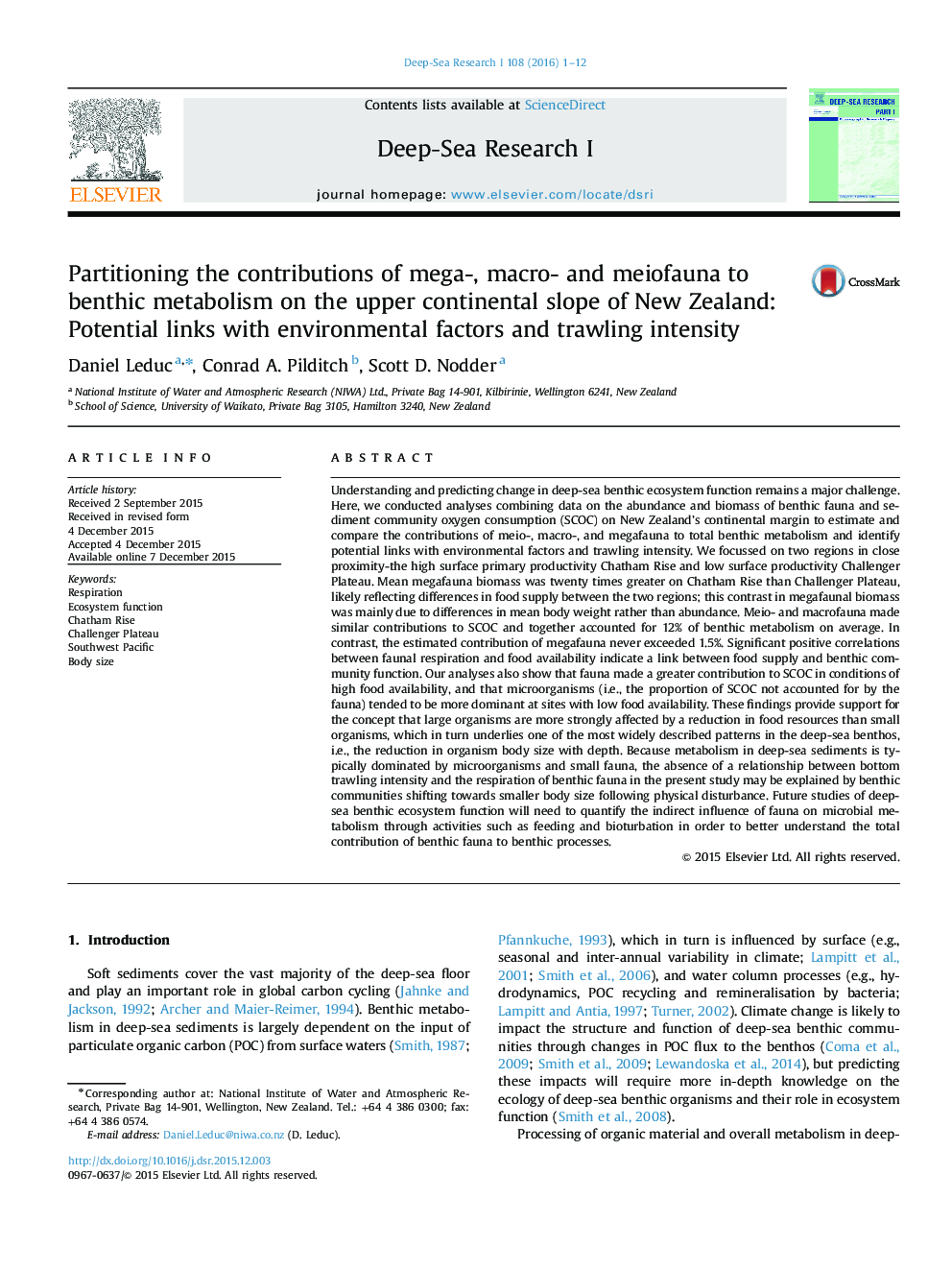| Article ID | Journal | Published Year | Pages | File Type |
|---|---|---|---|---|
| 6383435 | Deep Sea Research Part I: Oceanographic Research Papers | 2016 | 12 Pages |
Abstract
Understanding and predicting change in deep-sea benthic ecosystem function remains a major challenge. Here, we conducted analyses combining data on the abundance and biomass of benthic fauna and sediment community oxygen consumption (SCOC) on New Zealand's continental margin to estimate and compare the contributions of meio-, macro-, and megafauna to total benthic metabolism and identify potential links with environmental factors and trawling intensity. We focussed on two regions in close proximity-the high surface primary productivity Chatham Rise and low surface productivity Challenger Plateau. Mean megafauna biomass was twenty times greater on Chatham Rise than Challenger Plateau, likely reflecting differences in food supply between the two regions; this contrast in megafaunal biomass was mainly due to differences in mean body weight rather than abundance. Meio- and macrofauna made similar contributions to SCOC and together accounted for 12% of benthic metabolism on average. In contrast, the estimated contribution of megafauna never exceeded 1.5%. Significant positive correlations between faunal respiration and food availability indicate a link between food supply and benthic community function. Our analyses also show that fauna made a greater contribution to SCOC in conditions of high food availability, and that microorganisms (i.e., the proportion of SCOC not accounted for by the fauna) tended to be more dominant at sites with low food availability. These findings provide support for the concept that large organisms are more strongly affected by a reduction in food resources than small organisms, which in turn underlies one of the most widely described patterns in the deep-sea benthos, i.e., the reduction in organism body size with depth. Because metabolism in deep-sea sediments is typically dominated by microorganisms and small fauna, the absence of a relationship between bottom trawling intensity and the respiration of benthic fauna in the present study may be explained by benthic communities shifting towards smaller body size following physical disturbance. Future studies of deep-sea benthic ecosystem function will need to quantify the indirect influence of fauna on microbial metabolism through activities such as feeding and bioturbation in order to better understand the total contribution of benthic fauna to benthic processes.
Related Topics
Physical Sciences and Engineering
Earth and Planetary Sciences
Geology
Authors
Daniel Leduc, Conrad A. Pilditch, Scott D. Nodder,
